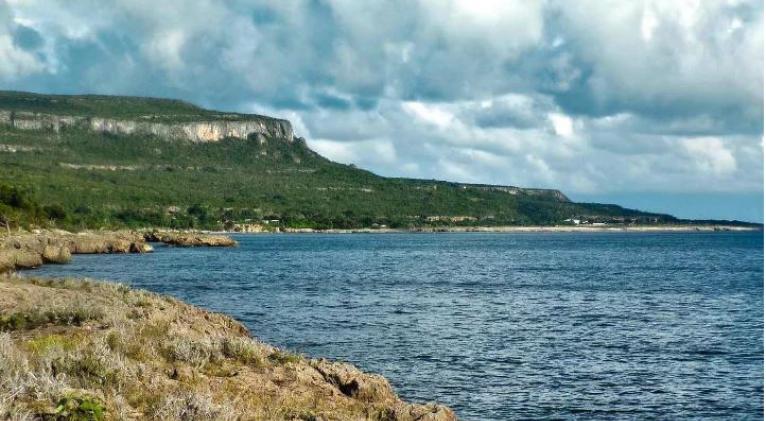The The marine and coral terraces of Maisi, Cuba, identified among the first 100 sites of world geological heritagea study of 181 candidates from 56 countries, reported today.
In a statement to Prensa Latina, Director of Geology of the Ministry of Energy and Minerals, Enrique Castellanos noted that Cuba was the only country in the Caribbean to have received an appointment World related site by International Union of Geosciences (IUGS).
Castellanos emphasized that this Maisie Geological Site – located in the eastern province of Guantanamo – has great global importance as these levels of terraces can be linked to other levels found in the Lesser Antilles and in the Pacific Ocean.
The expert added that this could be the subject of an international study to link sea-level rise and tectonic movements that have occurred in the Caribbean compared to others on the planet.
It is the result of decades of geological research in Cuba, he said, which has allowed to put the country’s geological knowledge at the service of the international scientific community for study. It is a degree recognition for geological studies and earth science researchers.
In Cuba, the study of terraces is used to investigate wave energy during hurricanes, as the region is regularly affected by these weather events, as well as correlating fluctuations in sea level in the Quaternary era around the world.
These coral and marine interglacial interglacial formations of the Mizi date back to the Quaternary period, and are known as one of the world’s best preserved series of elevated terraces due to the interaction of global sea level and tectonics.
With the designation of the IUGS, this Cuban geological site has become one of the most important landmarks on Earth, co-selected by more than 200 specialists from nearly 40 countries, and 10 international organizations from various disciplines of earth sciences.
Recognizing and highlighting the “Top 100” IUGS Geological Heritage Sites can increase their appreciation, use as educational resources, and preserve them.
Other data
Maisí terraces are formed from coral limestone with abundant fossil remains, from the Jaimanitas Formation of the Upper Pleistocene. There are about 28 levels of terraces with steps cut by rivers that form corridors with large transverse protrusions. Fossil tidal outlets, caves, and other karst features have also been found. A record representing about two million years of sea level fluctuations in an area tectonically linked to the Orient Transformation Fault in eastern Cuba, the boundary between the North American and Caribbean plates.
Geomorphologically, the area is a large ring of about 75 km in length that covers the eastern coastal region of the country as a narrow stairway to the north and south, and wider in the eastern corner.
This area of Maisí, like other sea terraces on the coast of Cuba, is part of an international collaborative research project between the Institute of Geology and Paleontology of Cuba and several French universities.

“Unapologetic tv specialist. Hardcore zombie trailblazer. Infuriatingly humble problem solver.”


:quality(85)/cloudfront-us-east-1.images.arcpublishing.com/infobae/OSGMES3WAFEBTE2GAHWFBH4XTM.jpg)
:quality(85)/cloudfront-us-east-1.images.arcpublishing.com/infobae/UY7LJVZAN5BDLPK7YZ6TXLS25Y.jpg)



More Stories
News summary from Gaza and pro-Palestinian protests on US campuses on May 4
Breaking news on Gaza and pro-Palestinian protests on American campuses, live: news and more
Best areas to rent a house in Miami